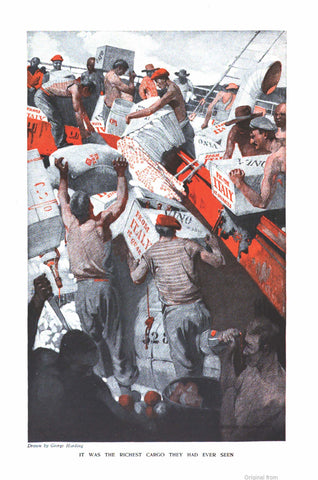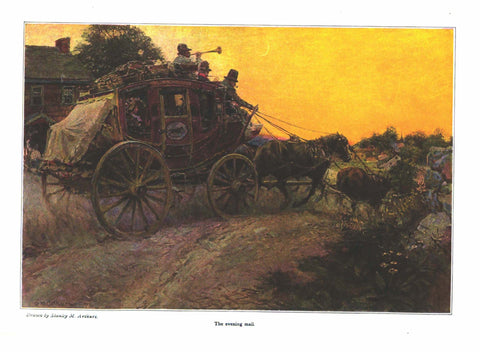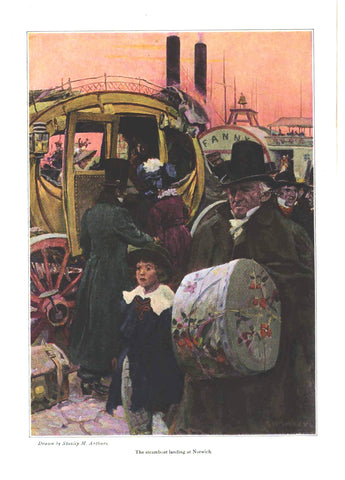Elizabeth Shippen Green story illustration for "Harper's Monthly" (1906): beautifully framed antique
$230.00
by Warwick Deeping
IMAGE INFORMATION
Image Size: H 9.25” x W 6.50”
Matted & Framed: H 15.25” x W 12.50”
Framed Price: $230.00
Packaging and shipping approximately $22.00
ESG enrolled at the Pennsylvania Academy of the Fine Arts when she turned eighteen in 1889. As a PAFA student, she honed her drawing and painting skills under the watchful instruction of Thomas Hovenden, Thomas Anshutz and Robert Vonnoh. When she graduated four years later, she began her career as an illustrator creating pictures for local newspapers.
Howard Pyle began teaching classes in “practical illustration” at Philadelphia’s Drexel Institute in 1894. In 1897, ESG enrolled in his classes, and while mastering his method for telling stories in pictures, she became friends with two other of his talented students—Jessie Willcox Smith and Violet Oakley. ESG’s mature style emerged over the next decade-and-a-half as she, JWS, and VO traded ideas about improving their art.
ESG’s living arrangement with JWS and VO was a story in its own right. They were “new women,” which meant among other things that their lives centered on their art, not husbands and family. In keeping with this progressive idea, their home/studio was of an artistic commune of women who, it seems, decided not to marry. Howard Pyle christened them “the Red Rose Girls” after their abode in Villanova, which was known as the Red Rose Inn.
When the inn was sold in 1905, VO purchased a farm in Mount Airy north of Philadelphia, and the Red Rose Girls relocated there. They called their new home “Cogslea” (an acronym for “Cozens” [Henrietta Cozens was their housekeeper], “Oakley”, “Green”, and “Smith”.) This household remained intact until ESG married Huger Elliott in 1911. The newly-weds moved then to Rhode Island where he became the director of the Rhode Island School of Design.
ESG produced the four “watchers” and “listeners” in this set while she was a member of the Cogslea household. The figures are premier examples of ESG’s mature style. Its foundation is the storytelling technique she learned from HP. To this, she added JWS’s method of using bright colors to enliven her scenes and draw her audience’s attention. She also included VO’s technique for heightening the emotional content of her characters by staging them with dramatic postures and facial expressions. It is no accident, therefore, that the four women in this collection are all intensely engaged, dressed in elaborate and colorful ensembles, and in striking, emotionally charged poses. We cannot take our eyes off them!








